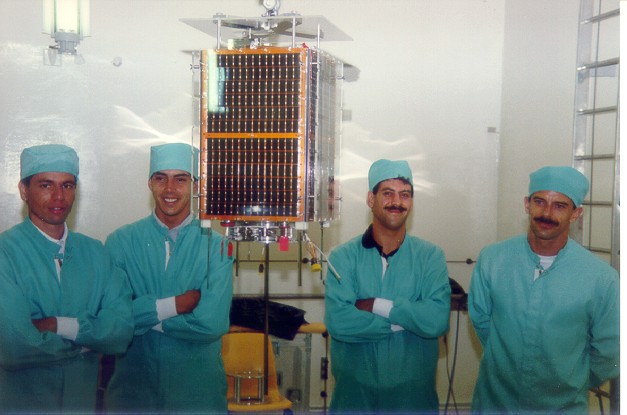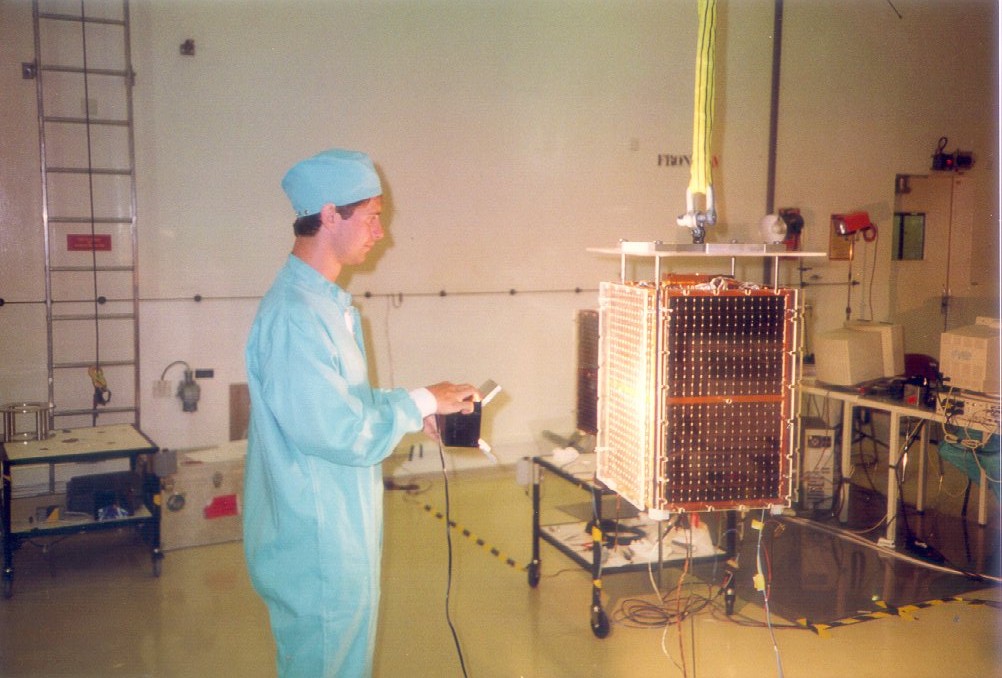
HealthSat-2 (see pic below with SSTL's Alex Da Silva conducting a solar array test) also took off into space 30 years ago today. It was a special satellite designed for sending medical messages, using low-cost ground stations. HealthSat-2 joined HealthSat-1 (UoSAT-3) as the second SSTL microsatellite in the HealthNet global communications system of SatelLife, a U.S. non-profit organization. HealthNet provided desperately needed low cost 'last mile' communication links between medical institutions and health programmes in the developing world.

One day later - on the 27th September - we celebrate the 20th anniversary of the launch for a trio of satellites - BILSAT-1, NigeriaSat-1 and UK DMC-1. The trio were the first generation of the Disaster Monitoring Constellation, launched from Plesetsk Kosmodrome in Russia, aboard a COSMOS-3M launcher. (Satellites pictured below.)
BILSAT-1 was the first Turkish Scientific Earth Observation satellite and was built under a training and development programme between SSTL and TUBITAK-BILTEN. The satellite benefited from on-board propulsion, GPS navigation and included experimental payloads including a multi-band imaging system, a real time image compression module, a GPS attitude receiver, and a Control Moment Gyro. BILSAT-1 also hosted new technologies such as high-capacity solid-state data recorders and star trackers.
NigeriaSat-1 was built under a training and transfer programme with the Nigeria Space Research & Development Agency, providing 32m multispectral imaging with a 600km wide swath. The imaging system was fitted with normalised differential vegetative index (NDVI) technology capable of giving early warning signals of natural and environmental disasters.
UK-DMC-1 was an earth observation satellite for the then BNSC (now the UK Space Agency). It carried a 32m imager operating in 3 spectral bands. UK-DMC-1 carried experimental payloads including the CLEO Cisco router which demonstrated the first use of the Interplanetary Internet v6 in space, an experiment demonstrating GNSS reflectometry, and a water resistojet propulsion system.